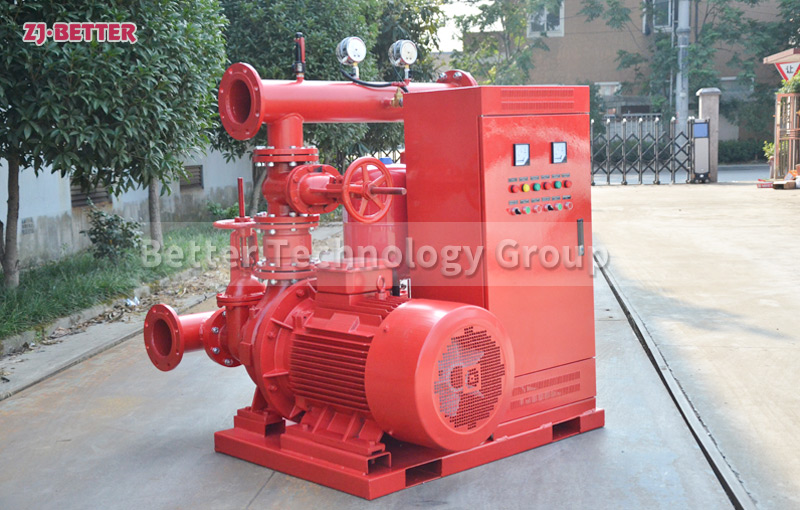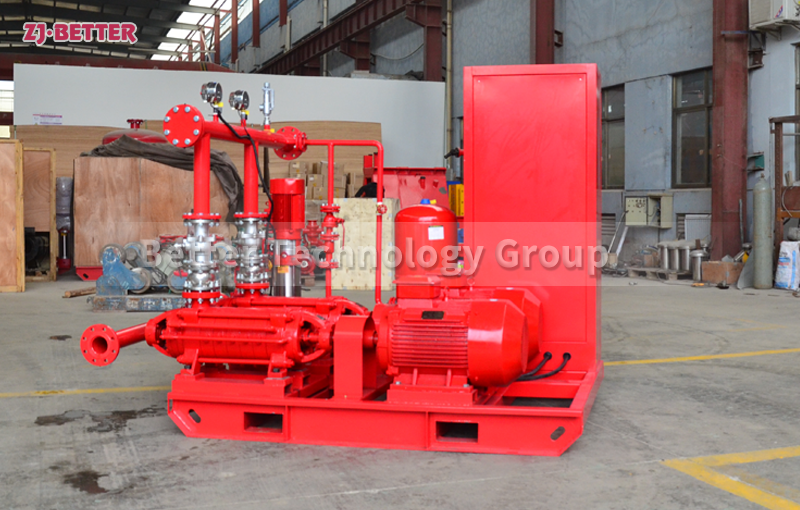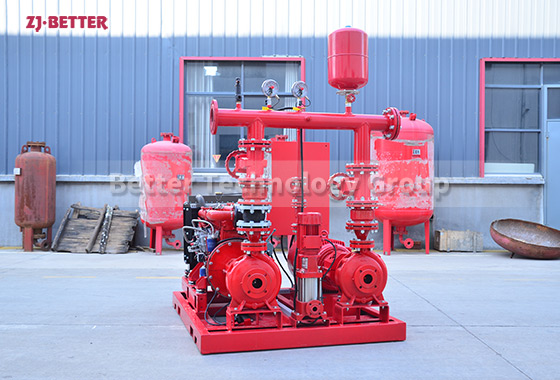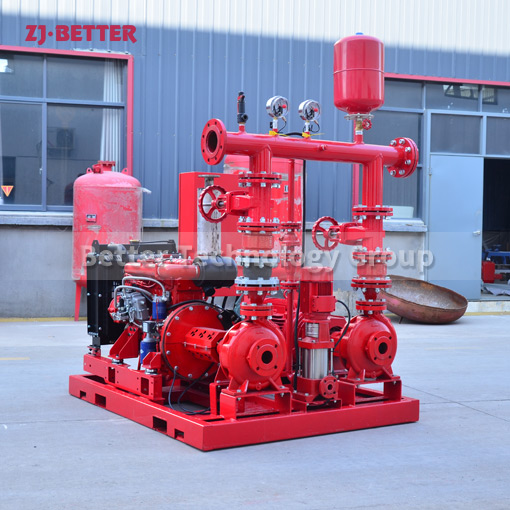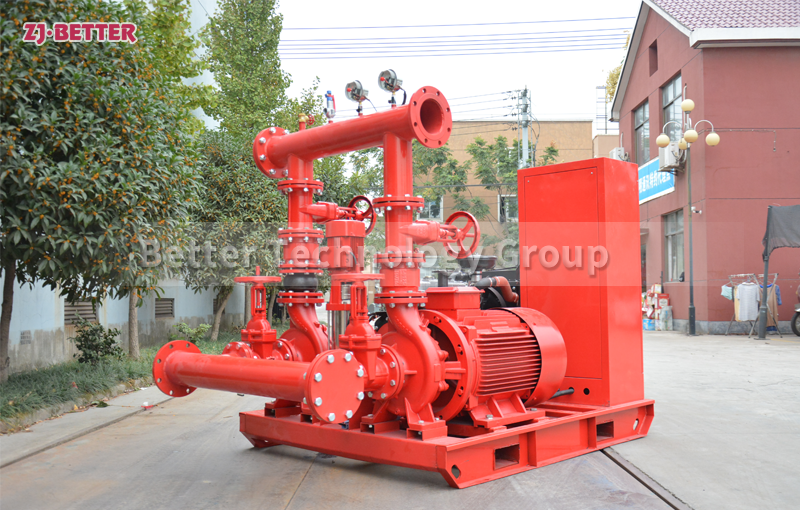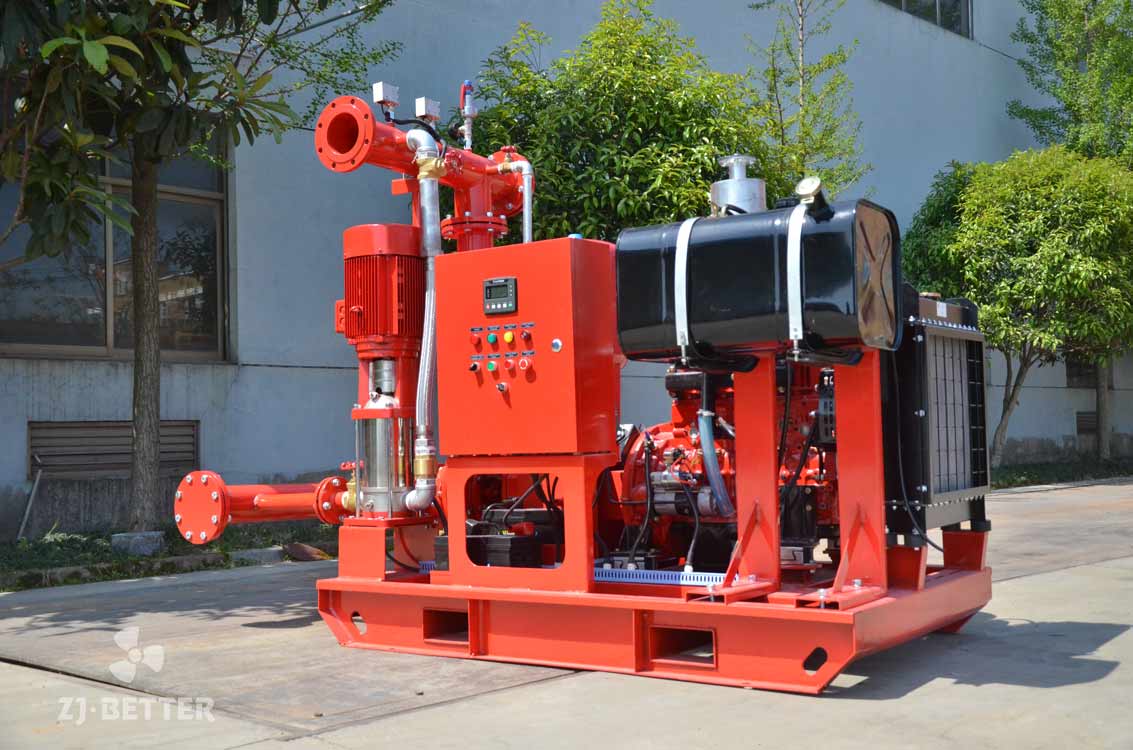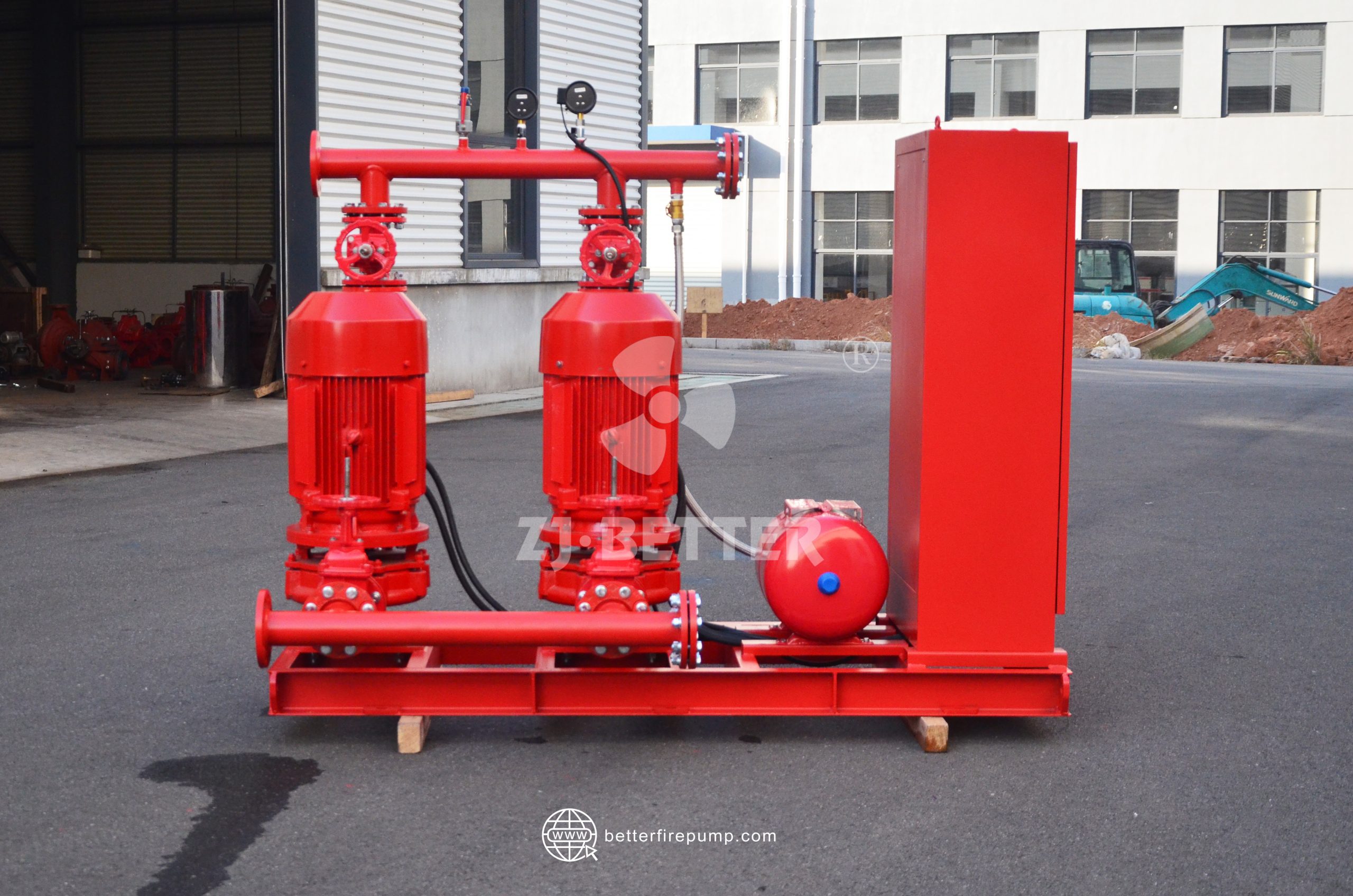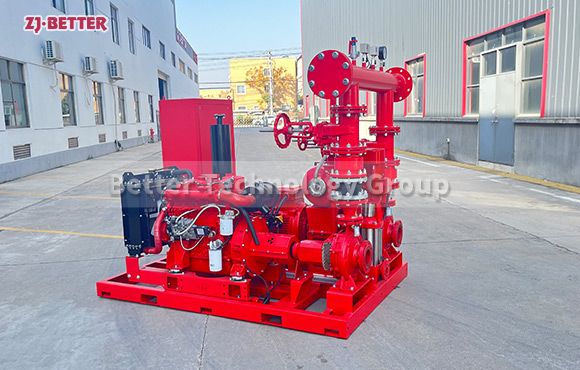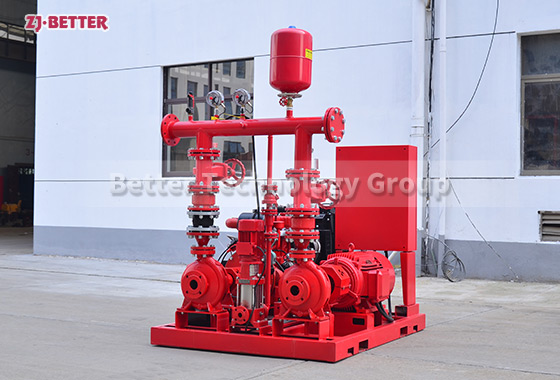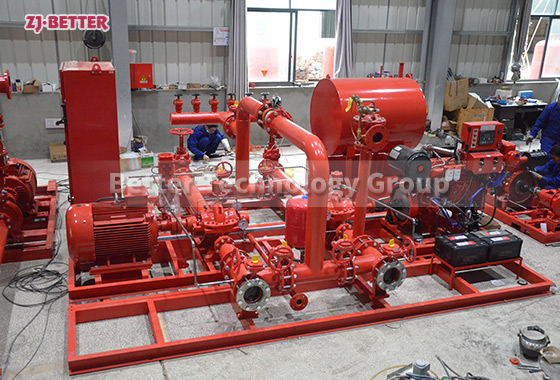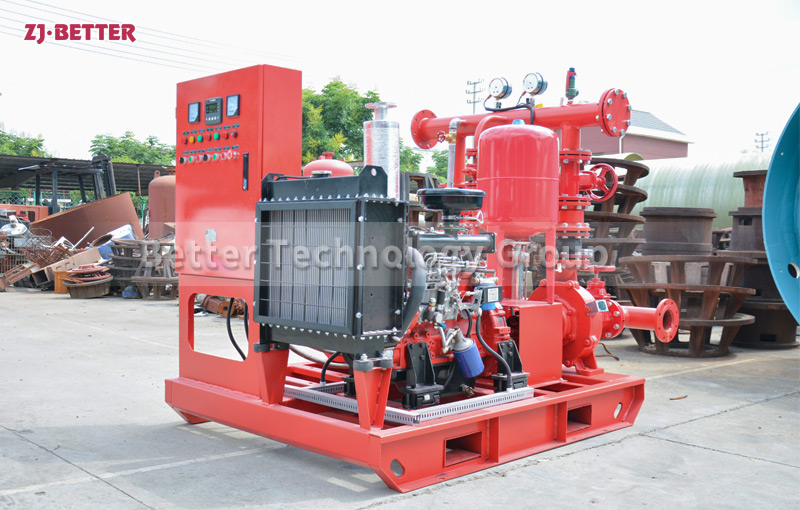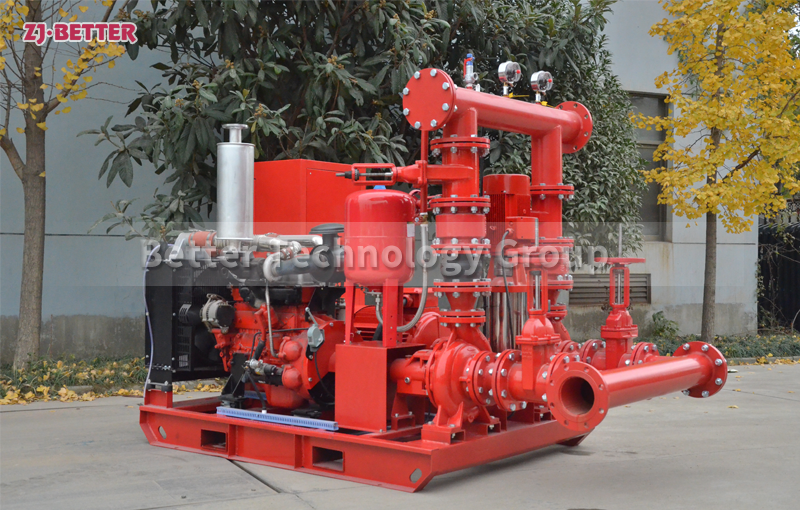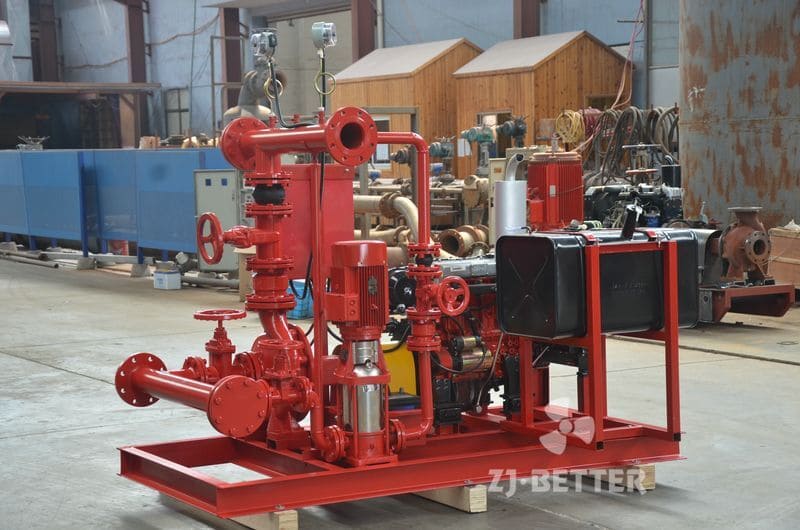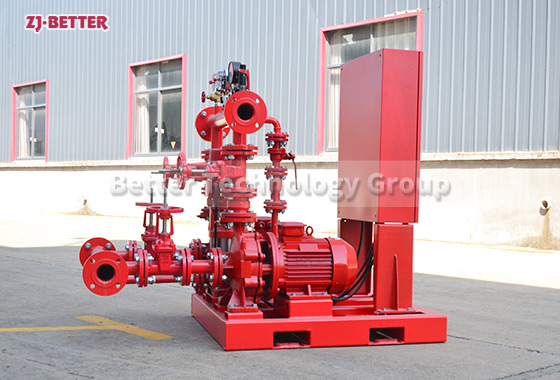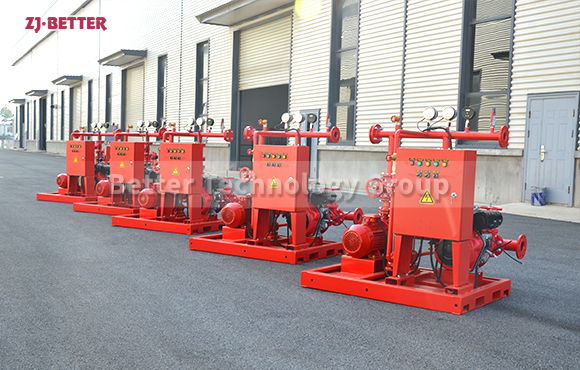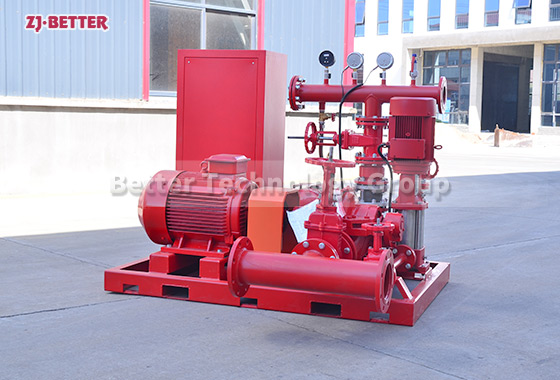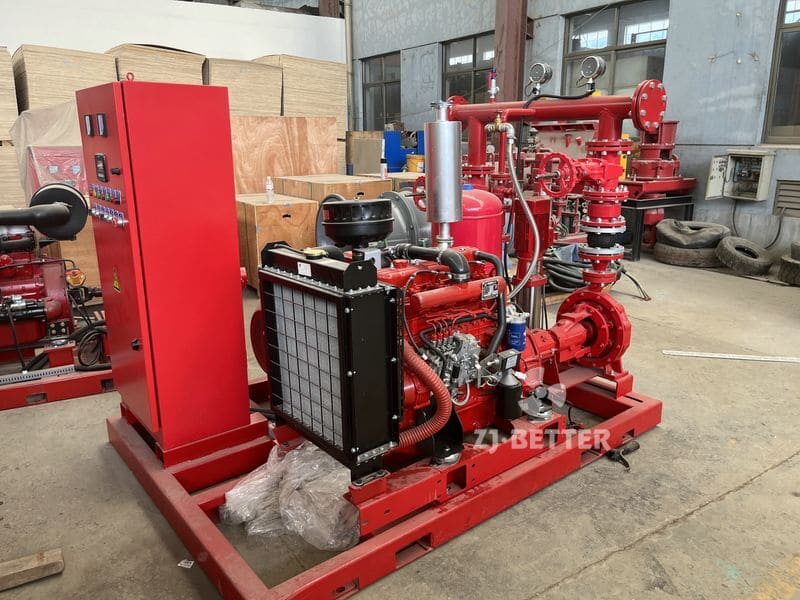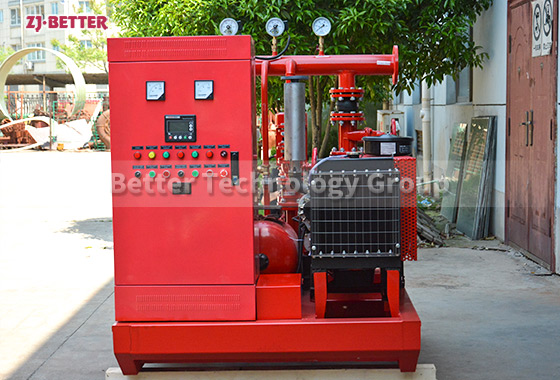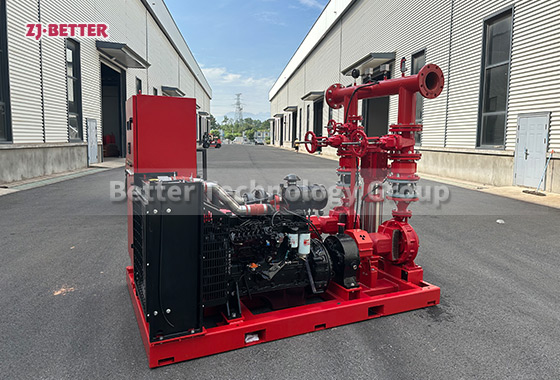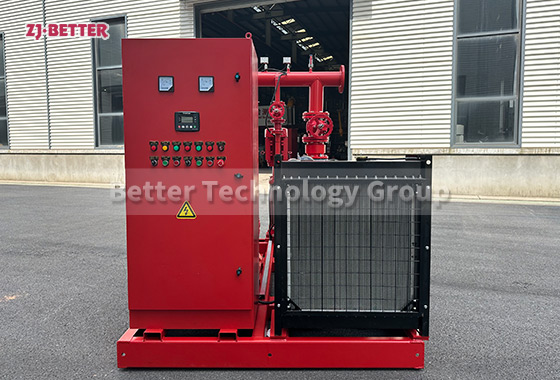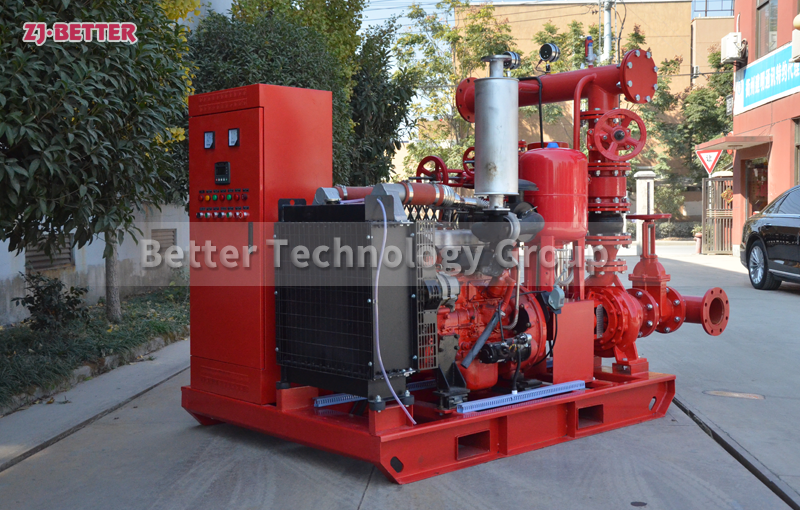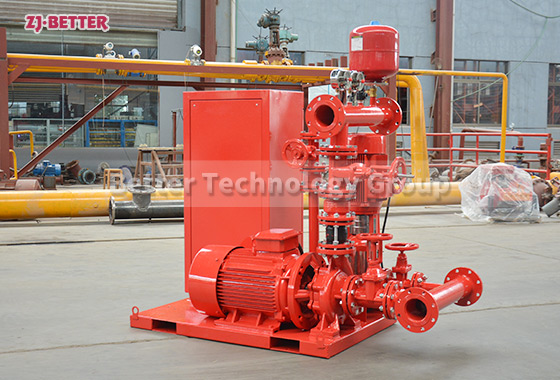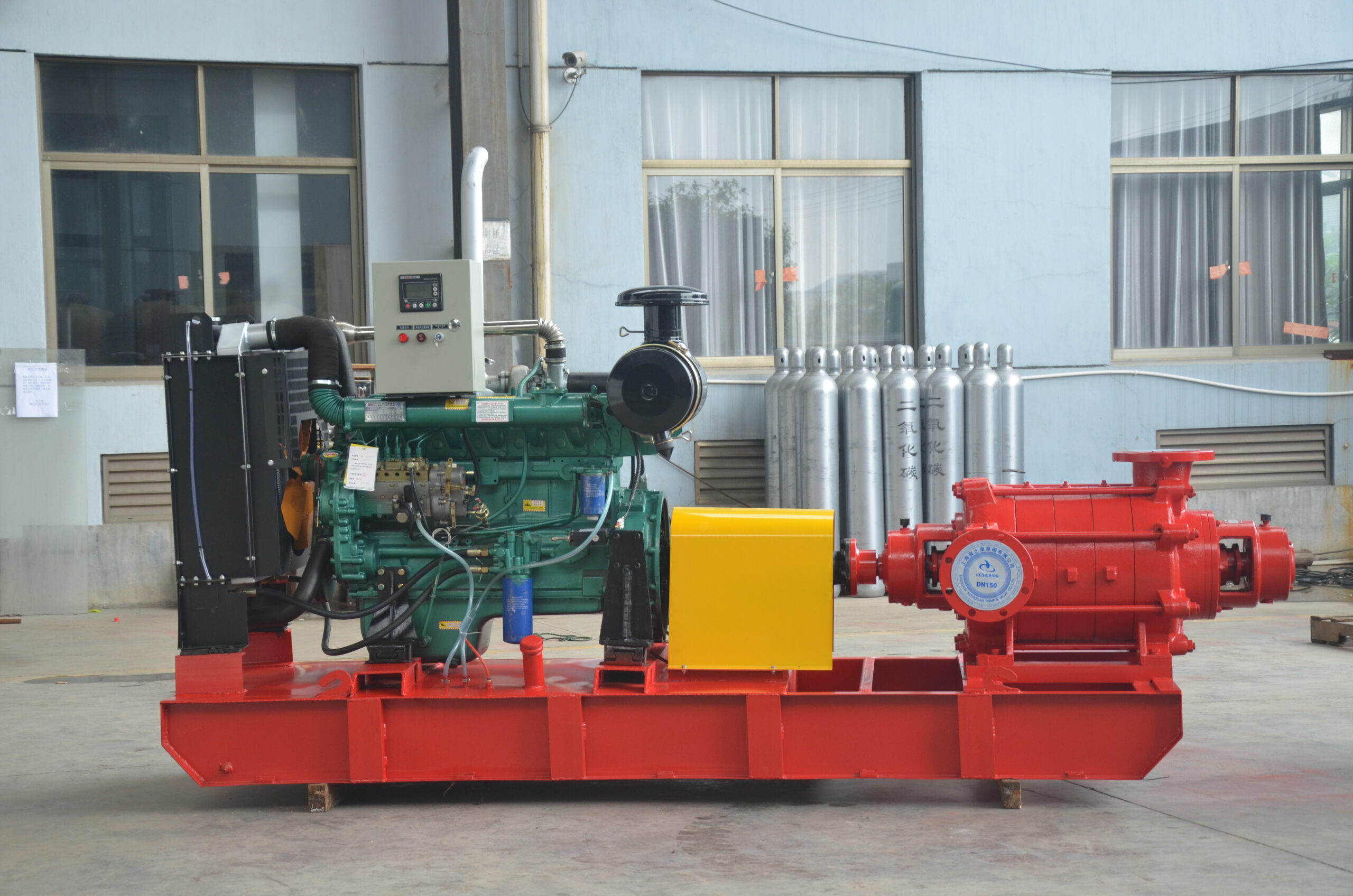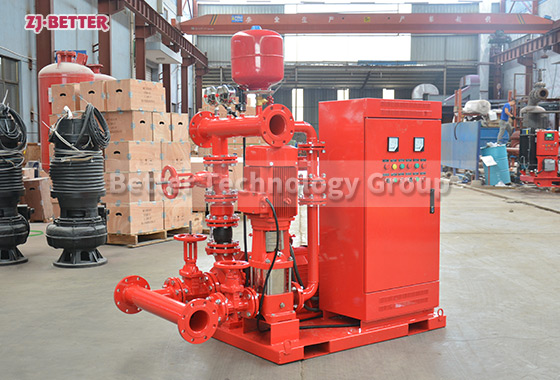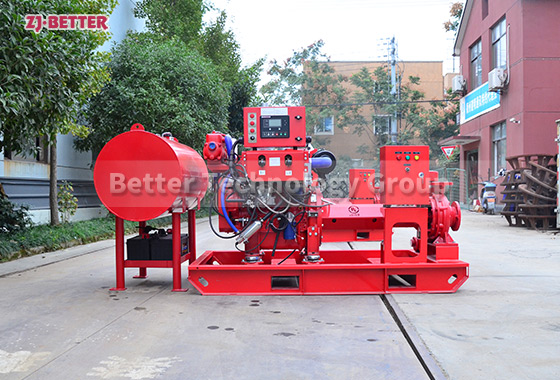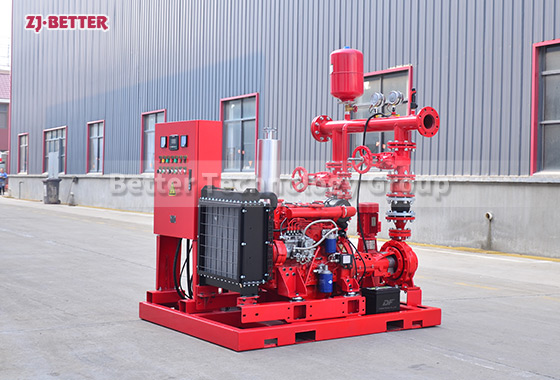Home » Fire Pump Set » EJ fire pump set composed of electric pump and jockey pump
EJ fire pump set composed of electric pump and jockey pump
EJ Fire Pump Set consists of End Suction Centrifugal Pump driven by Electric Motor and Vertical Jockey Pump. Pumps are assembled with discharge line accessories as well as Control Panel. Available Flow Capacities 50-1500GPM.
Contact US
Get Price
Share:
Content
Components
1. Electric pump: kinds of end suction pump, split case pump.
2. Jockey pump: vertical, small flow, head is higher than electric or diesel pump.
3. Control panel: control the pumps automatically with overload, overcurrent protection.
4. Accessories: Suction pipe, Discharge pipe with flange, Battery, Gate valve, Check valve, Flexible expansion joints, Pressure switches, Pressure gauge, base frame etc.
Inquiry
More Fire Pump Set

